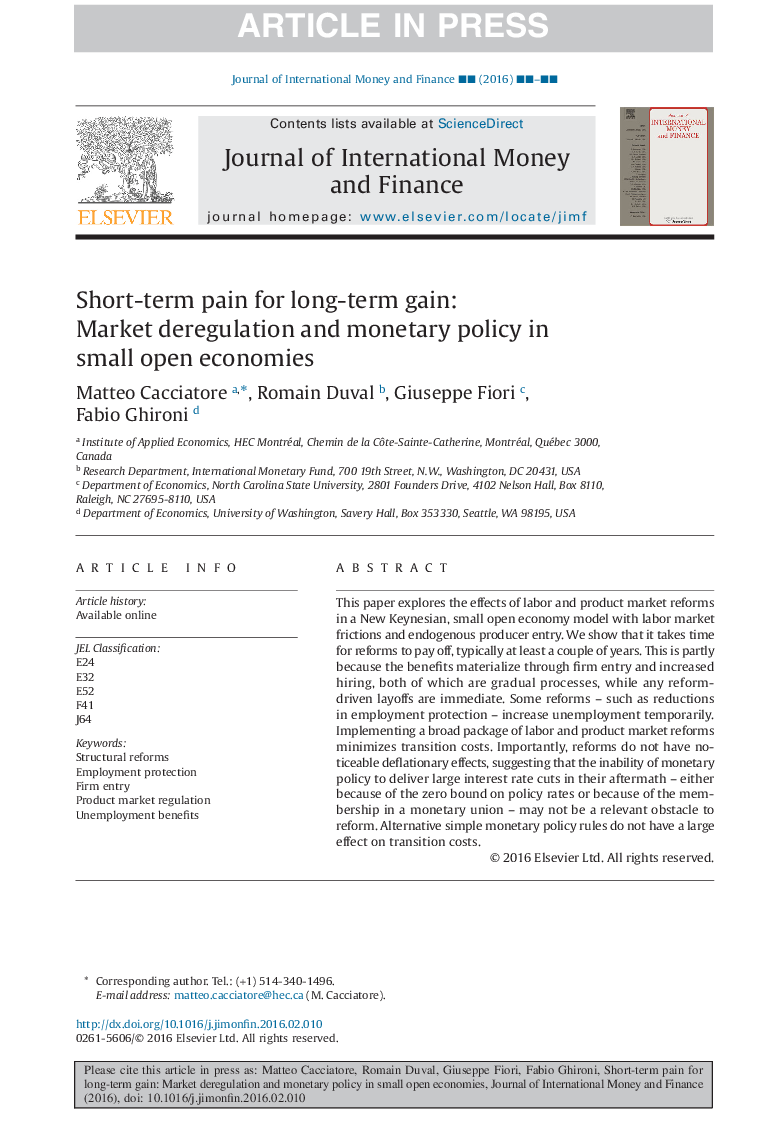| Article ID | Journal | Published Year | Pages | File Type |
|---|---|---|---|---|
| 7365545 | Journal of International Money and Finance | 2016 | 28 Pages |
Abstract
This paper explores the effects of labor and product market reforms in a New Keynesian, small open economy model with labor market frictions and endogenous producer entry. We show that it takes time for reforms to pay off, typically at least a couple of years. This is partly because the benefits materialize through firm entry and increased hiring, both of which are gradual processes, while any reform-driven layoffs are immediate. Some reforms - such as reductions in employment protection - increase unemployment temporarily. Implementing a broad package of labor and product market reforms minimizes transition costs. Importantly, reforms do not have noticeable deflationary effects, suggesting that the inability of monetary policy to deliver large interest rate cuts in their aftermath - either because of the zero bound on policy rates or because of the membership in a monetary union - may not be a relevant obstacle to reform. Alternative simple monetary policy rules do not have a large effect on transition costs.
Keywords
Related Topics
Social Sciences and Humanities
Economics, Econometrics and Finance
Economics and Econometrics
Authors
Matteo Cacciatore, Romain Duval, Giuseppe Fiori, Fabio Ghironi,
